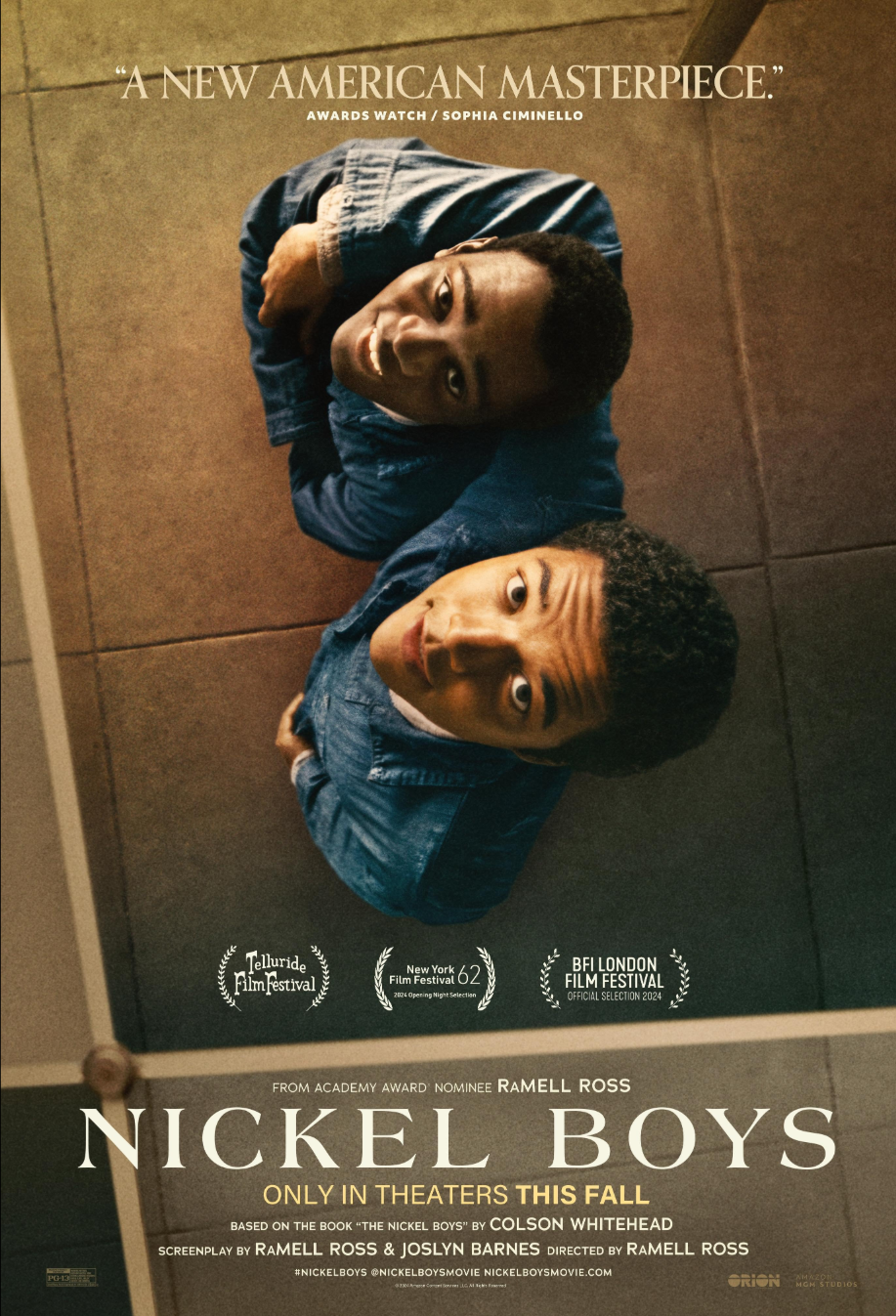Nickel Boys is a film based on an excellent Coleson Whitehead book which was inspired by true events. Children accused of crimes are sent to a boarding school and treated to horrendous and sometimes fatal conditions. They must do everything and anything they can to survive, and two of the boys Elwood and Turner befriend each other and look out for each other in a place where it's clear that doesn't happen all that much. The film toggles between the 60s and current day, and it's clear that the current day alumni of the school are on the spectrum of trauma coping mechanisms. They hear again and again of men who died by suicide, some are doing well, some have an inability to form lasting relationships, and really everything in between. One thing is made apparent, nobody who spent any time at Nickel Academy came out ok.
This film was shot in a particularly interesting and compelling way - we see the scenes from the 60s shot from the character's point of view, and it's some time in the movie before we even see Elwood's face, and eventually, we begin to see the film through Turner's point of view. But when we are in present day (or flash forward) the film is shot from behind the head of our lead character, though we aren't totally sure whose life we are watching. I understand that this unusual way of shooting the movie is based on the book, where the narrator switches back and forth between Elwood and Turner. What I haven't found is an explanation for why the modern scenes are shot from behind, and I have a few theories. One is that perhaps the Director is telling us that the lead character never really feels like he is living his own story once out of the academy (and there is some plot evidence for that, though I won't share because, spoiler). The other theory is that one trauma coping mechanism is to develop a high level of awareness of everything happening in one's orbit, including the ability to see behind your own back - maybe we are being told that even when this character is at ease, he is still watching his own back.
Whatever the answer may be, I have to admit that the film didn't rise to the level of greatness that the book achieved. It was good, but it takes some getting used to the camera angles, and while I like the explanation for the attempt, it does make the movie as much about the movie making as the story it's telling and I'm not certain it worked. If you only have time for a handful of Oscar films, read this book instead.






No comments:
Post a Comment